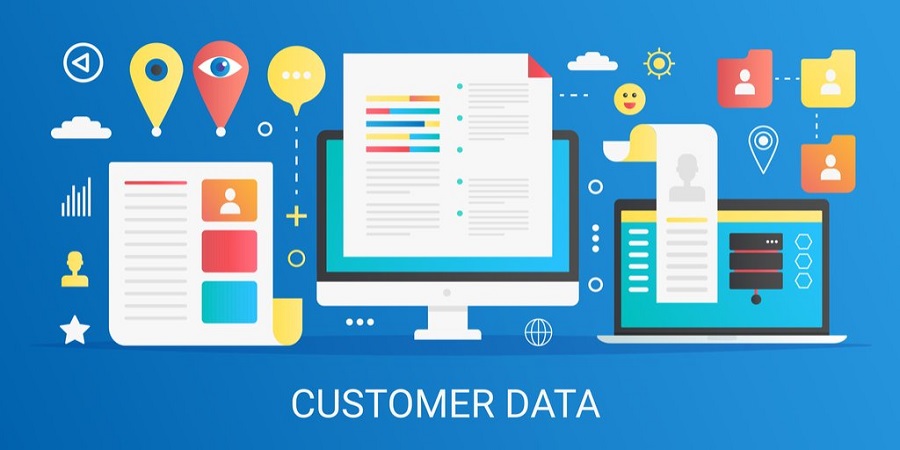Related Articles
In modern businesses where communication with prospects and customers has increased exponentially at all stages of production, the need for preserving and organizing customer data difficulties according to a well-defined framework has only risen.
Thus, issues with data management or analytics can be caused by the tiniest inaccuracies and can compound to have far greater consequences.
Poor quality data costs firms an average of $4 million per year, according to recent statistics.
Thus, it becomes important to keep records clean as the overarching benefit is to keep customers satisfied through a well-informed response to queries each time a purchase is made.
This ensures higher conversion rates, keeps customers engaged with the products for a longer period of time and personalizes the market strategy taken by sales reps to make it more consumer-friendly.

How To Deal With Customer Data Difficulties
In order to ensure that the reputation of your firm does not take a hit and customers are not annoyed or frustrated when they are making inquiries, to deal with customer data difficulties, 6 common problems have been listed below, along with a simple solution to fix all the issues.
1) Incomplete or Outdated Data
Most of the data stored may not have all the fields filled. This looks like phone numbers not being there or addresses with no mention of streets or apartment numbers. And that is common customer data problems.
When new employees are hired and old clients are assigned to them, they can run into problems with contacting clients due to outdated data.
People change numbers and move houses, and being unaware about these changes means contacting leads becomes difficult.
The solution cannot be manual data-entry as it is time-consuming and incredibly inefficient. This requires data enrichment from a high quality data source with more specific questions in customer submission forms.
2) Inaccurate Data
Some customer data problems, If not regularly inspected, databases can be filled with spelling errors, miscalculations, and other mistakes which become hard to trace back to; this means that there is a huge portion of data lost every year by firms.
An average firm has inaccuracies in almost 33% of all of its data. A spelling error means the next time a client is contacted, the firm’s image will be tarnished due to a lack of attention to these minute errors.
A miscalculation means nobody can explain the missing hundreds and thousands of dollars in the balance sheet.
To fix this, large-scale data enrichment initiatives must be taken, even if it means hiring more people; the extra cost of their salaries will be outweighed by the wider profit margins due to better quality data.
3) Integration of Unstructured Data
Information is now collected from multiple avenues: surveys, customer complaints and questions, reviews etc. are all part of what is called a voice of the customer (VOC) program.
More and more firms are now using this program to achieve higher customer win-back rates and annual company revenue.
Unfortunately, because feedback from social media or email correspondence is unstructured in nature, data specialists often find it troubling to fit human conversations into pre-existing fields in conventional databases.
The solution is to use natural language processing (NLP) software and sentiment analysis tools to extract quantitative data from unstructured data.
This allows a better assessment of brands and marketing strategies implemented by firms so that directors can chart out the course for the next quarter with more accurate speculation.
4) Duplicacy
Duplicacy is one of the most common flaws of data that has not been cleansed for a long time.
Multiple text messages and emails may be sent to the same client, or no email may be sent at all.
During negotiations, sales teams may find the data confusing if there are mixed signals.
Studies have shown that nearly 15% of all data concerning leads have duplicate data. Preventative measures, therefore, must be taken. Before data is finalized to be placed in databases, they must be vetted and scanned to check for duplicates.
To quicken the process, identical fields are identified, such as domain name, email address, phone numbers etc.
5) Inconsistent Formatting
The most common example of a problem in formatting is phone numbers. There can be multiple inputs of different variations: some numbers contain country codes, some contain dashes and so on.
Visual simplicity allows a better analysis of data as specialists crunch numbers all the time and the additional differences tend to affect them negatively in their cognition.
To prevent this, restricted access to the database serves as a way to reduce inconsistent inputs from unrelated individuals.
Besides that, forms or surveys may be modified to automatically change formats or request users to fill up fields accordingly.
In any case, a data cleansing software can also carry out this task, but will require special installation and maintenance by experts if it is not automated.
6) Lack of Automation and Centralization
Data quality is hampered even more with the increasing number of databases corporations use.
Almost 66% of corporations have an incoherent approach to data quality as they use somewhere from eight to even 30 spreadsheets to manage data. Manual entry is also a headache; it is time-consuming, inefficient and severely prone to human errors.
Manual data cleansing is also not reliable as exported data may be examined but not the original record. Some details may not even be noticeable to humans.
The one-stop solution to all of this is to use one centralized software that has modules complete with all the necessary infrastructure to manage data smoothly.
Using a customer relationship management software (CRM) with data cleansing modules allows a durable storage of customer data, protected and organized in a suitable manner.
Out of all the firms out there, Odoo is the best one. Odoo is a platform built to cater to all your needs with a user-friendly UI that encompasses all of its apps.
With global servers, it aims to improve the efficiency of your business by solving all of your data-related problems.
Syncoria, a digital transformation company based in Canada, is an official Odoo Ready partner. To contact Odoo, call at +1 (416) 628-5522, or email them at [email protected].




